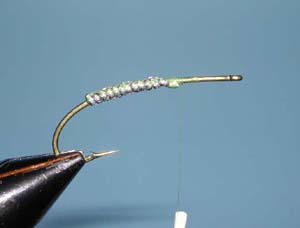
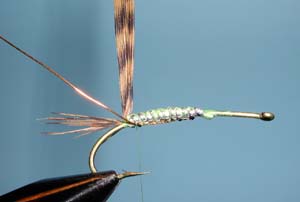
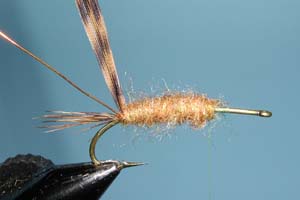
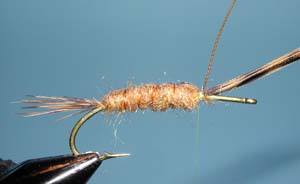
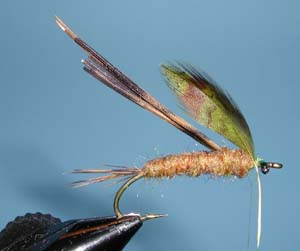
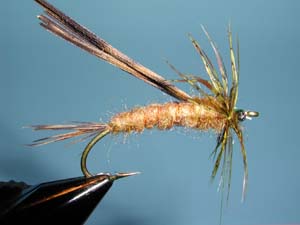
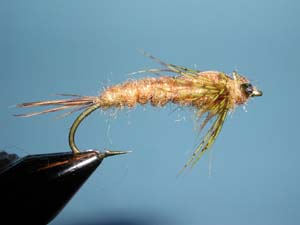
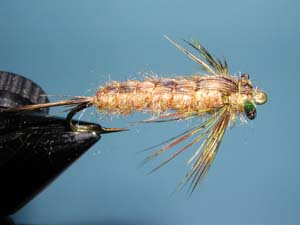
|
1.Tie-in weighted wire about 1/3 the shank length behind the eye and wrap to the tail tie-down point above the hook barb. This will be about 12-15 wraps of wire. Flatten the weighted wire and add a drop of Zap or superglue. |
 |
|
|
2. Tie in pheasant tail fibers for tail exactly at tail location, then fold back butts to be used later for shellback. |
 |
|
|
3. Tie in wire for ribbing. Dub a heavy abdomen with a Golden Stone nymph dubbing. Dubbing should be translucent and absorbent. I used Metz "Paxton's Buggy Nymph" for this one. |
 |
|
| 4. Pull the butts from tail forward over the abdomen as a shellback, tie off and trim. Wind the ribbing forward, binding the back to the abdomen. Tie the wire off, fold the wire back over the tie-down, tie off again, and break off the remaining wire. |  |
|
|
5. If your section of pheasant tail is long enough, you can continue to use it for the wingcase. If not, cut another section of the pheasant tail feather and tie it in by the butts where the abdomen and thorax meet. Place the mono eyes about 1/8 inch behind the hook eye and dub a thorax from the abdomen to just behind the eye placement. Make the Thorax a bit bulkier than the abdomen. Prepare and tie in a Hungarian partridge feather, by the butt, in the front part of the thorax area. |
 |
|
|
6. Fold the partridge feather and spiral it forward, making one wrap, and tieing it off in front of the thorax. |
 |
|
|
7. Bring the wingcase over the thorax, spreading the partridge fibers in a downward sweep and tie down. Dub an additional amount of dubbing over the mono eyes and in front of them. Bring the wingcase over the dubbed eyes and tie down securely behind the eyes. |
 |
|
|
8. Whip finish and apply head cement if you choose. Some like to apply a little epoxy to the wingcase. |
 |
©2023 Steve Schalla
This page is not to be copied without
my explicit permission.